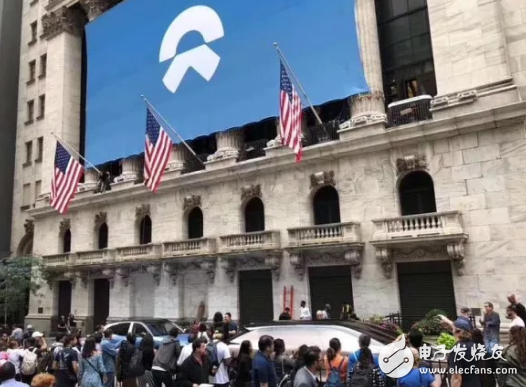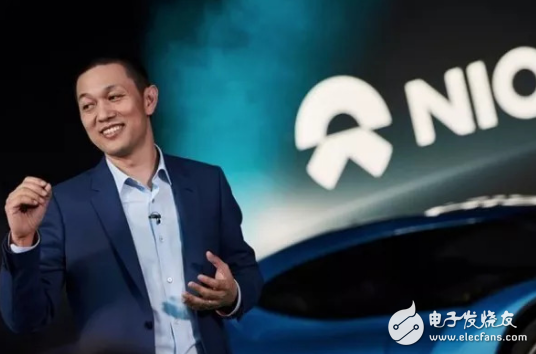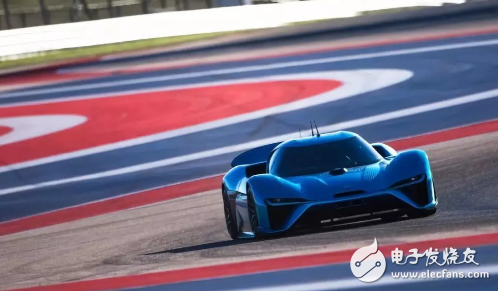Today, Weilai Automobile is listed on the New York Stock Exchange under the stock code "NIO". The highest raised capital is US$1.518 billion. It is expected to release 160 million shares at a price range of US$6.25 to US$8.25.
Regarding the mass production delivery issue that everyone is more concerned about, the previous IPO document revealed that as of August 28, Weilai has produced a total of 2,200 ES8s and has delivered 1,381 ES8s to users. Chairman Li Bin made it clear that Weilai 10,000 ES8 will be delivered this year.

The prospectus shows that although there are more than 16,000 orders that have already paid for the reservation, 9497 of them are orders that only paid 5,000 yuan and can be fully refunded. The prospectus also reminds that if there is a delay in the delivery of ES8, there may be a large number of cancellations.
In general, although Weilai's production capacity began to increase in August, the limited production capacity and delivery volume are still far from enough. Coupled with the delay in delivering ES8 before, Weilai's revenue data is not optimistic.
Continuous losses, why does Weilai insist on listing?In fact, since its establishment in 2014, NIO has completed six rounds of financing, with a total financing of more than 14 billion yuan, attracting participation from Tencent, Baidu, Hillhouse Capital, and Sequoia Capital. Among them, the reason why Tencent has invested heavily in Weilai Automobile uncharacteristically, the purpose of external analysis is to benchmark Xiaopeng Automobile supported by Ali, and to occupy a place in the field of new energy vehicles.

However, in the two and a half years from 2016 to June 30, 2018, Weilai’s total revenue was only 45.99 million yuan, while total operating expenses reached 10.742 billion yuan and a net loss of 10.92 billion yuan. According to analysis by industry experts, NIO’s net loss for the entire year of 2017 doubled from 2016, while the loss in 2018 continues to show an upward trend, and it is expected that it will continue to be at a loss for a long time in the future.
As of June 30, Weilai's cash and cash equivalents were less than 4.5 billion yuan. Now the company is losing money quickly and has huge losses. It still insists on public offerings, not only for capital, but also to seize the opportunity in the Chinese electric vehicle market. .
The outside world has always regarded Weilai as the Tesla of China, and Weilai has indeed been imitating Tesla and trying to replicate its success. For example, Tesla's first car was the Roadster sports car, which is considered its "first model". NIO also launched the first electric supercar EP9 in 2016 and won the title of "New North's fastest electric car". It became famous in World War I and attracted the attention of many investors.

However, Weilai’s famous model EP9 has not been mass-produced like the Roadster. There are only 6 units in total and cannot be legally launched on the road, which can only be regarded as a gimmick. The subsequent mass production model Weilai ES8 also has insufficient production capacity, and the delivery volume is far from enough to support the continued development of Weilai.
Previously, because of the import tax, the cost of entering the Chinese market for electric vehicles like Tesla was very high. However, after liberalizing overseas brands to establish wholly-owned companies in China, Tesla electric vehicles established a company in Shanghai. Successful domestic production is undoubtedly the biggest rival for NIO. Therefore, Weilai must seize the market as soon as possible, and a large amount of follow-up financial support is needed.
If production capacity is unsustainable/subsidies have declined, can you survive on the market?As we all know, the biggest problem facing the new car-making forces is mass production. Although NIO has taken the first step and delivered some new cars, production capacity has always been the biggest problem for NIO and even Tesla.
At present, ES8 is produced by a production line cooperating with NIO and Jianghuai. Although Weilai insists on this as a cooperation, the industry generally believes that it is made by JAC. Among domestic automobile manufacturers, JAC is a rising star, but there is still a gap compared with BYD, BAIC, SAIC and other companies.
In addition, based on the consideration of lightweight and simplified structure of the whole vehicle, the Weilai ES8 model adopts an all-aluminum body structure. Weilai and Jianghuai have adopted a new production line for this purpose. However, the manufacturing technology of the all-aluminum body is very high and the process is complicated. , Independent brands generally fail to master this technology, and only a few joint venture brands such as Chery Jaguar Land Rover and Shanghai GM can produce it. JAC has never built such a product on a large scale before, and it is obvious that the production capacity of ES8 needs to be increased quickly.
Moreover, Weilai stated in the prospectus that although Weilai participates in every step of the supply chain and manufacturing process, it cannot ensure that it can maintain quality standards. At the same time, Weilai is preparing its own factory in Shanghai and is expected to be ready by the end of 2020, but it also claims in the prospectus that it cannot ensure that Weilai can obtain the qualification for new energy vehicle production.
Does this mean that Weilai cannot guarantee the current ES8 quality standards of JAC's foundry, nor can it guarantee that its own factories will be qualified for the production of new energy vehicles in the future? Such "frankness" is a blessing or a curse for consumers and investors who support NIO.
At the same time, the decline of new energy vehicle subsidies is also a problem that NIO has to face.
ES8 has launched two models of the founding version and the benchmark version, the prices before subsidies were 548 thousand yuan and 448 thousand yuan respectively. If in accordance with the 2017 subsidy standard, through the new energy vehicle subsidy and the battery rental program provided by Weilai, the original price of the ES8 benchmark version of 448 thousand yuan, consumers only need to pay 275,400 yuan to drive home. But after the subsidies for new energy vehicles continue to decrease, such prices will certainly not be available again.
However, most domestic self-owned brand new energy vehicles have not yet been involved in the mid-to-high-end field. Weilai has already broken into a world. If it can persist, it may not become China’s Tesla. After all, Tesla is also almost bankrupt. Relying on continuous financing to get to the present, who knows what will happen to Weilai, which has been listed and raised funds? Let's wait and see together.
Interactive Smart Board,Smart Boards,Smart Board Projector,Smart Electric Board
APIO ELECTRONIC CO.,LTD , https://www.apiodisplays.com